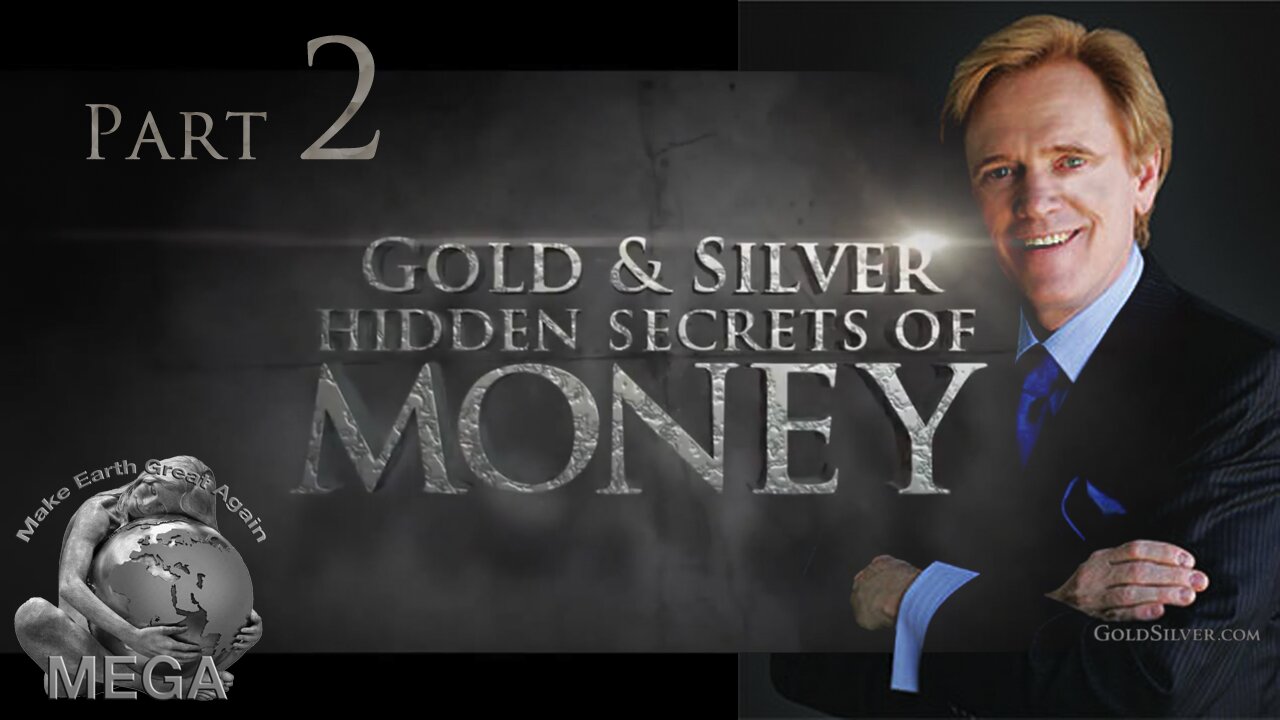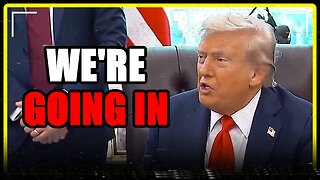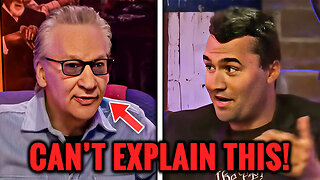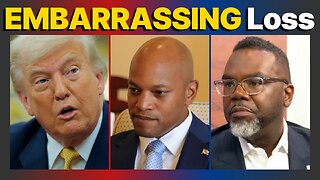Premium Only Content

Hidden Secrets of Money, Episode 2: The 7 Stages of Empire
In episode 2 of the Hidden Secrets of Money, Mike takes us to Greece to learn when, where and why currency became money. You'll also learn about one of the most predictable long-term economic cycles – the Seven Stages Of Empire. Then join Mike at a private meeting in London where he lets you connect the dots of the seven stages across the last 140 years of our own monetary history.
An understanding of the past gives us foresight. This is particularly significant when studying the rise and fall of markets. Monetary history is cyclical, a neverending process of currencies rising to prominence and then collapsing as the pendulum swings back and forth between quality money and quantity currency.
How does the cycle play out? It usually begins with a monetary system and economy based on a commodity like gold — the supply of which can increase slowly, as the economy grows. But, as time moves on, the system moves away from gold as the source of underlying value of its currency. Eventually, the system completely replaces gold with fiat money (e.g. paper money backed by nothing with any intrinsic value), which can be printed without restraint. Thus, the value of each unit of currency is debased over time, which ultimately leads to a market crash.
To better understand the currency cycle we must look to the Seven Stages of Empire as described by Mike Maloney, the founder of GoldSilver.
The Seven Stages
Sound Money: A country starts out with solid money of well-defined value, usually either gold or silver (or a proxy backed by gold or silver).
Public Works: As the country develops economically and socially, its government begins to build out infrastructure, adding layer upon layer of public works.
Massive Military: As national economic affluence grows, so does a government’s political influence and aspirations, and it increases expenditures to fund a massive military.
Perpetual War: Eventually it puts its military to use and expenditures explode.
Debasing of the Currency Supply: To fund the war, it steals the wealth of its people by debasing their coinage with base metals or by replacing their money with a currency that can be created in unlimited quantities.
Loss of Faith: The loss in purchasing power of the expanded currency supply is sensed by the populace and by financial markets, triggering a loss of faith in the currency.
Currency Crisis: A mass exodus out of the failing currency and into precious metals/other tangible assets takes place. The currency collapses and gold and silver rise sharply in price as their finite supply is relentlessly bid higher by the huge quantity of currency that was created.
Important! This process transfers massive wealth to those who had the wisdom to position themselves beforehand in real money – gold and silver.
So, how are these stages playing out right now? Following Mike’s outline, let’s apply them to US history.
Stage 1 – Sound Money
For over a hundred years the United States had sound money with a 100% reserve ratio. For example, $20 in paper was fully convertible to $20 in gold. But then, in 1913, the Gold Exchange Standard established a 40% reserve ratio, which means that $50 equaled $20 gold. Rock solid, definitively valued currency was suddenly devalued by more than half.
Stage 2 – Public Works Programs
In 1933, newly elected President Roosevelt — in the name of fighting the Great Depression — initiated massive public works programs. To fund them, he created currency inflation, by raising the government-determined, dollar-price of gold from $20.67 to $35. Then he went even further, ending the convertibility of paper currency for gold, then outlawing private ownership of gold altogether. Gold certificates were no longer printed (although convertible silver certificates persisted into the 1960s). Roosevelt, for all practical purposes, turned America into a welfare state, where ever-increasing amounts of tax money are raised and spent on the “public good” — a state of affairs that has persisted to the present day.
Stage 3 – Bretton Woods
In 1941, the US economy was driven by war, which was financed by inflated American dollars that were spent abroad and brought a vast store of gold back into the country. Remember, war can be good for the economy if it’s not being fought on your soil. By the end of the war, the United States owned 2/3 of the world’s gold and Europe was flooded with paper money. This led to a collaboration of world leaders, who met at Bretton Woods, New Hampshire, to devise a new world money standard. Henceforth, the US dollar would reign as the supreme world currency. There was no gold reserve ratio and Americans were still banned from owning the metal. However, because of the country’s massive gold reserves and a trade surplus heavily in the US’s favor, foreigners could continue to redeem their dollars for gold.
Stage 4 – Neverending War
After WWII, the US was the only remaining industrial power that hadn’t been decimated by conflict. One might have supposed that the rebuilding process meant the end of the war, at least for a while. It didn’t. In fact, the US was immediately transformed to a military/industrial state, where war was essentially perpetual. The Korean War, the Cold War, and the Vietnam War continually upped the cost of either fighting foreign wars or maintaining constant domestic war-readiness. Such immense ongoing costs could only be financed through deficit spending, which is another term for currency inflation. Other countries noticed.
By 1971, the dollar standard created at Bretton Woods was falling apart. The US was less and less able to supply the gold needed to back its inflated dollar in foreign trade. In fact, the by this point the US had already lost 50% of its gold as nations began redeeming their US dollars for gold in earnest. Relentless fiat currency dilution had resulted in the issuance of twelve times more dollars than were legitimately backed by US gold holdings.
Stage 5 – Eternal Inflation
The dollar/gold trade imbalance boxed President Nixon in, and he saw no other option but to renege on the US’s gold-for-dollars promise. He “closed the gold window” in August of 1971. Foreigners could no longer redeem their dollars for gold at a fixed rate, and the price of gold was allowed to float. The US dollar had become a pure fiat currency, completely untethered from any real store of value, with no limit on inflation. That undermined the credibility of the currency. Something had to be done, and the result was the petrodollar, which stemmed from a 1974 agreement between the US and Saudi Arabia that the world oil trade would thereafter proceed only in US dollars. Since every country needed oil, the pact served to extend the US dollar’s monopoly as the world’s trade currency for decades to come. It also allowed inflation and currency debasement to proceed unchecked. Since 1974, the dollar has lost some 80% of its purchasing power.
Stage 6 – Where We Are Today
In recent years, the US federal debt has rocketed to over $20 trillion, and currency inflation has proceeded apace. The petrodollar system has held to this point. But especially in light of China’s emergence as the largest global importer of oil and their recent launch of a yuan-based oil trading exchange that seeks to shift the currency in which the world trades crude, the petrodollar’s days seem to be numbered.
Foreign countries have become increasingly nervous about the value of the dollars they’ve amassed because of the US’s trade deficit, which has been in the tens of billions per year since 2000. Potentially paving the way for gold-backed oil trades in the future.
History teaches that when governments inflate their currencies past a certain point, the confidence of the people and of markets evaporates. With a highly enmeshed world trade system, any cracking of the dollar’s dominance is going to have dire consequences, not only for Americans but for citizens and nations spanning the globe.
Default on the US debt, followed by deflation and a major economic depression, is one possibility. The Federal Reserve — still mindful of the 1930s — fears that outcome more than anything. But the other alternative, hyperinflation, could be even worse (think Zimbabwe). At some point, however, we are likely to have to pick our poison.
Stage 7 – Tomorrow
In the final stage of empire, the currency always totally collapses and misallocations of capital have to be forcefully wrung out of the system. Under these circumstances, history says that the affected nation (or nations) have to return to some form of fixed standard of monetary valuation. It might be the gold standard revisited. Or — who knows? — it might involve a technological innovation like cryptocurrencies. The only certainty is that such a day of reckoning is coming. It may be delayed for longer than anyone imagines, but it cannot be prevented.
“We are arriving at the greatest wealth transfer of all time, thus, the greatest opportunity of all time.” ~ Mike Maloney
🔻
🎥 Watch: Hidden Secrets of Money, Episode 1: Debt Based Currency vs. Real Money
https://rumble.com/v1o3wlq-hidden-secrets-of-money-episode-1-debt-based-currency-vs.-real-money.html
🔻
🎥 Watch: Hidden Secrets of Money, Episode 2: The 7 Stages of Empire
https://rumble.com/v1o8130-hidden-secrets-of-money-episode-2-the-7-stages-of-empire.html
🔻
🎥 Watch: Hidden Secrets of Money, Episode 3: From Dollar Crisis to Golden Opportunity
https://rumble.com/v1o8ilk-hidden-secrets-of-money-episode-3-from-dollar-crisis-to-golden-opportunity.html
🔻
🎥 Watch: Hidden Secrets of Money, Episode 4: The Biggest Scam in the History Of Mankind (in 7 Easy Steps)
https://rumble.com/v1o8m1l-hidden-secrets-of-money-episode-4-the-biggest-scam-in-the-history-of-mankin.html
🔻
🎥 Watch: Hidden Secrets Of Money, Episode 5: The Rise Of Dictators Via Economic Crisis
https://rumble.com/v1o8s79-hidden-secrets-of-money-episode-5-the-rise-of-dictators-via-economic-crisis.html
🔻
🎥 Watch: Hidden Secrets of Money, Episode 6: End Of US Dollar Dominance - The Rollercoaster Crash
https://rumble.com/v1oa96w-hidden-secrets-of-money-episode-6-end-of-us-dollar-dominance-the-rollercoas.html
🔻
🎥 Watch: Hidden Secrets of Money, Episode 7: The USA’s Day of Reckoning
https://rumble.com/v1oagdn-hidden-secrets-of-money-episode-7-the-usas-day-of-reckoning.html
🔻
🎥 Watch: Hidden Secrets of Money, Episode 8: The Crypto Revolution
https://rumble.com/v1oan4k-hidden-secrets-of-money-episode-8-the-crypto-revolution.html
🔻
🎥 Watch: Hidden Secrets of Money, Episode 9: Fall of Empires Rome vs USA
https://rumble.com/v1oaulb-hidden-secrets-of-money-episode-9-fall-of-empires-rome-vs-usa.html
🔻
🎥 Watch: Hidden Secrets of Money, Episode 10: American Bread & Circus
https://rumble.com/v1odcjx-hidden-secrets-of-money-episode-10-american-bread-and-circus.html
-
 12:15
12:15
Nikko Ortiz
16 hours agoMonday Gun Fails
55K11 -
 8:19
8:19
MattMorseTV
16 hours ago $10.48 earnedTrump is ACTUALLY DOING IT.
52.7K45 -
 5:40
5:40
Sugar Spun Run
23 hours ago $0.80 earnedNutella Brownies
4.1K -
 8:46
8:46
Faith Frontline
15 hours agoBill Maher STUNNED as Charlie Kirk Proves God Exists
3.76K7 -
 LIVE
LIVE
FyrBorne
9 hours ago🔴Warzone M&K Sniping: On the Hunt For The Next Fun Builds
58 watching -
 7:11
7:11
MudandMunitions
11 hours agoNY Legal, Still LETHAL! Colt M4 + Griffin Armament GPS3X Prism Sight! NIGHT SHOOT
2.55K3 -
 2:11
2:11
WildCreatures
2 days ago $0.47 earnedBrilliant Blue Hyacinth Macaw Eats Nuts With Impressive Dexterity
4.52K5 -
 29:45
29:45
DeVory Darkins
14 hours ago $5.04 earnedDemocrat Governor suffers EMBARRASSING LOSS to Trump as ICE takes Garcia into custody
8.99K58 -
 24:50
24:50
Bitcoin.com
15 hours agoEthereum hit an ATH this weekend | The Weekly Recap for Aug 25
8.44K -
 56:27
56:27
Actual Justice Warrior
15 hours agoAnti-White Celebrity DESTROYED On Jubilee
10.5K11